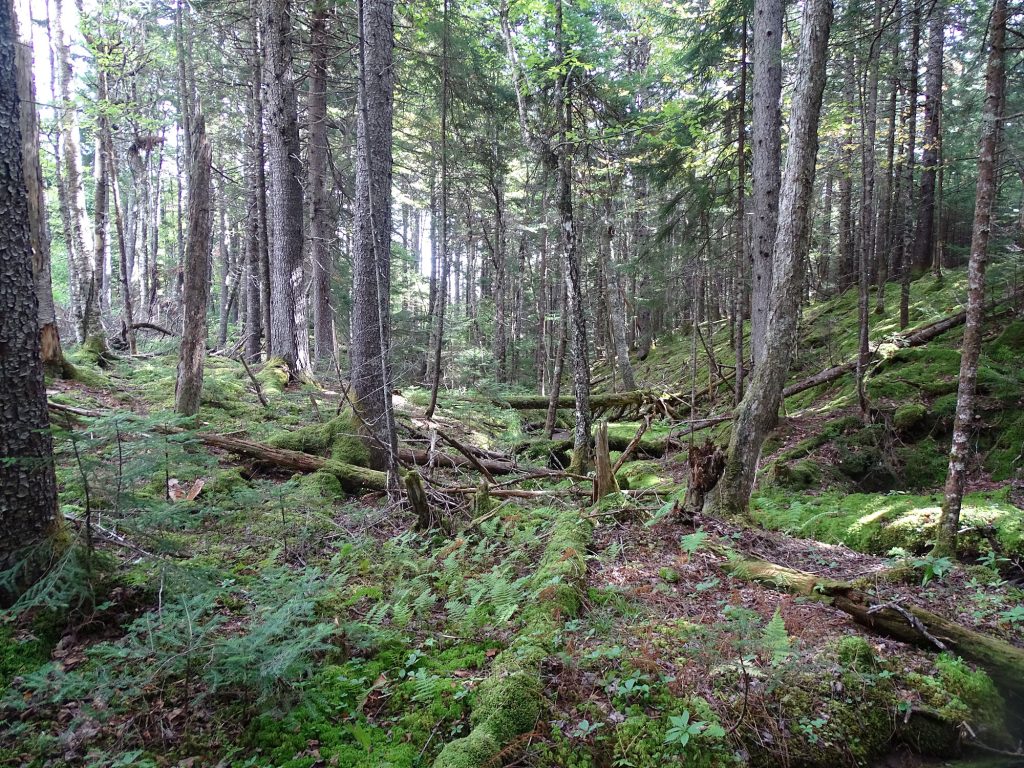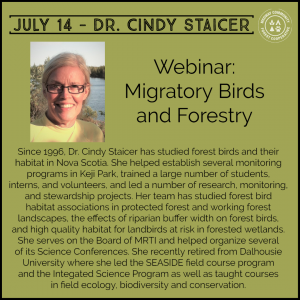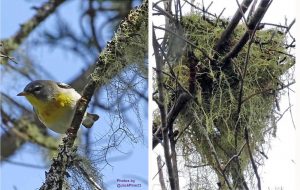I hope that Prof. Staicer’s presentation is widely viewed – and assimilated
There is a lot of info about birds that is well known to birdwatchers when you talk to them, but is often hard to access or to fully comprehend for those who are not themselves experienced birdwatchers and also familiar with the extensive scientific literature on birds. For example, the kind of info needed to answer the question, ‘what are the likely effects of widespread clearcutting in NS on bird populations?’
I have assembled at least a sampling of the scientific literature and various articles on birds and forests and forestry under Natural History/Birds, but I have still found it difficult to answer that question – and to critique the answer of DNR/L&F that cats have far greater impact on bird populations in NS than clearcutting.
I couldn’t have ordered a better tutorial on the topic of birds and forests and forestry in NS than the webinar on Migratory Birds and Forestry given by recently retired Dalhousie Professor and ornithologist Cindy Staicer in the Medway Community Forest Cooperative (MCFC) webinar series yesterday. It is now available as a Youtube video.
From Prof. Staicer’s Staicer’s Outline, the topics she covers:
Cape May warbler
(Dick Daniels onWikipedia)• Why birds, biodiversity crisis, avifaunal declines, SAR, other species of conservation concern
• Migratory birds, fidelity to breeding sites
• How we know about the bird species, population trends, habitat needs, in the Acadian forest of Nova Scotia
• Species associated with different stand types/ages
• Species that are more sensitive to harvesting within stand, landscape
• Strategies for incorporating birds into forest management in Nova Scotia
• Questions
The presentation is 45 minutes followed by 10 minutes Q&A. It incorporates results from many NS-based research projects that Cindy directed or otherwise participated in over the last 25 or so years.
A few of the topics that relate directly to the yet-to-be-realized implementation of the Lahey Recommendations:
– At 36:30 min, a list of Species of Conservation Concern expected to be impacted by High Production Forestry units under the Triad
 – At 32:58 min Prof Staicer talks about Riparian Buffers and cites studies showing that buffers did not maintain mature forest species found in the larger landscape, rather the buffer transects were dominated by species found in regenerating forest. In terms of evidence for buffer width thresholds, she found that buffer widths of 75·100 m were required to maintain habitat for all of the birds in the larger stand.
– At 32:58 min Prof Staicer talks about Riparian Buffers and cites studies showing that buffers did not maintain mature forest species found in the larger landscape, rather the buffer transects were dominated by species found in regenerating forest. In terms of evidence for buffer width thresholds, she found that buffer widths of 75·100 m were required to maintain habitat for all of the birds in the larger stand.
– In regard to forested wetlands in Nova Scotia, Cindy commented that in addition to their supporting several Avian Species-at-Risk, the habitats themselves are at risk. I asked whether forested wetlands in NS are harvested and she confirmed what I thought was the case, that they are indeed harvested and with no restrictions related to Migratory Species-at-Risk.
– Based on the details Prof Staicer provided about species associated with different stand types/ages and positions in the canopy etc., I asked “Given fidelity to territory etc it must be possible to predict effects of different harvesting regimes on bird populations – yes?.” Her response:
I would say so.. the problem – I don’t think is there is any evidence about what happens to those birds if they come back and their habitat is not there. A lot of people just assume they go somewhere else…if the harvesting happened while on territory, they would have a very difficult time. I have searched the literature on this and can’t find any evidence that those birds if they lose their territory due to harvesting during the breeding season whether they are actually going to be able to breed at all
Getting back to the question, I think one should be able to predict the effects of different harvesting regimes on bird populations even if you don’t worry so much about that same bird is coming back to a particular spot.. by simply knowing the preferences and the typical abundances of different species in different stand types in different management regimes, one should be able to put that in a model and run it and see how that’s going to change the population in future.
Towards the wrap-up of her presentation, Cindy directed us to some excellent publications by Maine Audubon with guidelines for landowners and foresters (see list under NSFN/Natural History/Birds)
There is much more in Prof. Staicer’s presentation than I can adequately highlight or summarize conveniently and I hope that it is widely viewed – and assimilated.
Kudos to Cindy Staicer and to MCFC for another highly informative presentation.
——–
View upcoming MCFC webinars

Riparian area on the Seven Gulches woodlot



